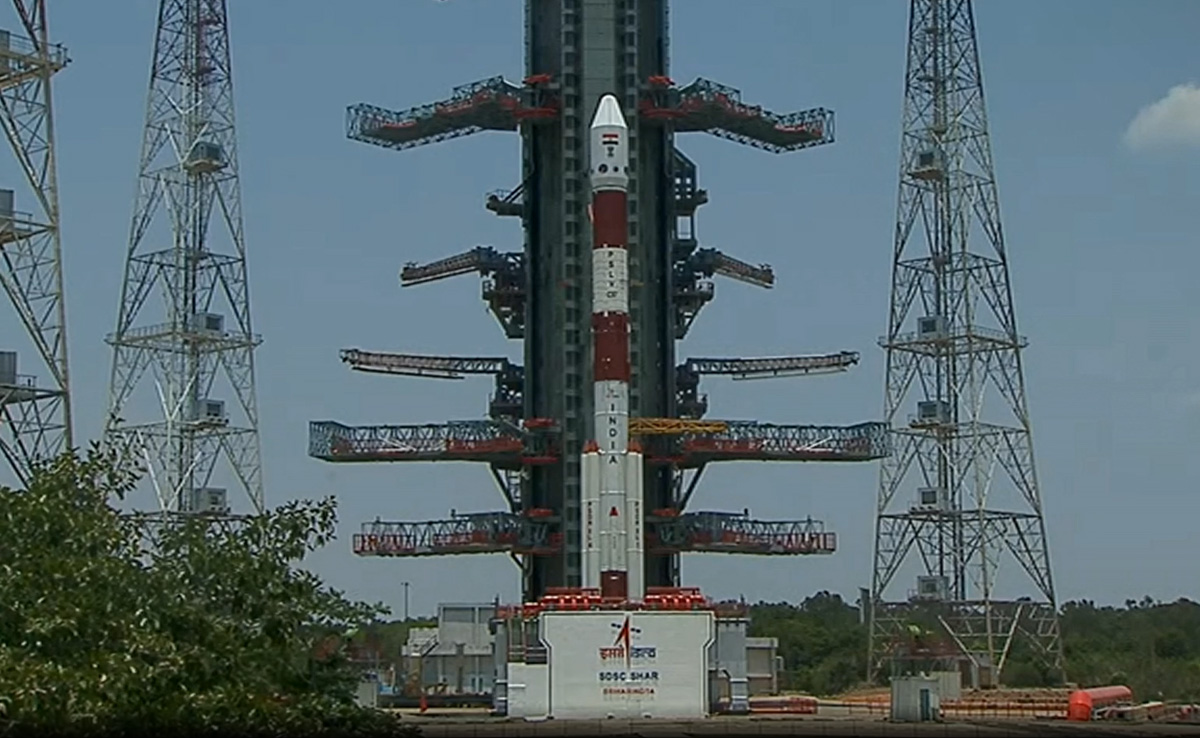The POEM will be the fourth stage of the Polar Satellite Launch Vehicle.(File)
When India launches its specialised observatory to study neutron stars and black holes on New Year's Day on Monday, it will also send a 'POEM' up into space.
The 'PSLV Orbital Experimental Module', or POEM, will be the fourth stage of the Polar Satellite Launch Vehicle, which will undertake its 60th flight and carry the XPoSAT, or the X-ray Polarimeter Satellite as its primary payload. The POEM will have 10 experiments, the highlight of which will be a 'Women Engineered Satellite' (WESAT) made by an institute in Thiruvananthapuram.
This is the third flight of POEM, which can easily be described as a low-cost, non-human Indian space station. "The Indian Space Research Organisation (ISRO) is creating wealth from waste in space," asserted S Somanath, chairman of the space agency.
He said that, during earlier missions, the fourth stage of the PSLV was left to burn up in space and create space debris, but it is now being used as a resource, and high-value experiments are being undertaken.
Some of the experiments on POEM are by Indian startups and others by ISRO to test and validate space technologies, using the spent fourth stage to carry out in-orbit scientific experiments for an extended duration of one to six months.
Student 'Satellite', Green Experiment
Among the 10 experiments is a 'Women Engineered Satellite' (WESAT) made by the LBS Institute of Technology for Women, Thiruvananthapuram, which has been put together thanks to the efforts of Dr Lizy Abraham, the principal investigator for the project. Sheril Mariam Jose, student coordinator for WESAT, said, "This mission holds a special significance as it marks the first-ever women-led, women-only satellite of India and it is also the first student satellite from Kerala."
Some experts pointed out that calling WESAT a `satellite' is a misnomer as it is merely a `payload' onboard the POEM.
An established space startup, Bellatrix Aerospace Limited, is flying two payload experiments which include the use of a green monopropellant thruster. The world is working towards using rocket fuels that are less toxic and this startup, incubated at the Indian Institute of Science, Bengaluru, aims to make rocket launches environment-friendly.
Dhruva Aerospace Private Limited is flying experiments related to microsatellites in line with its motto: 'Creating exceptional small satellite systems to help space exploration technology meet human imagination and innovation'. Microsatellites are very promising at a time when the world is trying to set up constellations of thousands of satellites.
The Vikram Sarabhai Space Center (VSSC), which is a part of ISRO, is flying two experiments - a fuel cell power system and a high-energy cell.
All of the partners on POEM are trying to exploit the unique space-based low-cost resource made available by the Indian space agency. "ISRO is opening its doors wider than ever to private-sector participation so that, together, it can successfully boost the space economy for a resurgent Atmanirbhar (self-reliant) Bharat," said Dr Pawan Goenka, Chairman, Indian National Space Promotion and Authorization Centre (IN-SPACe).
An assessment by IN-SPACe suggests that the Indian space economy is valued at around $8 billion, with a 2% share in the global space economy. It has the potential to reach $44 billion by 2033, with about 8% of the global share.
Orbit Injection, Lowering
According to ISRO, after the injection of XPoSat at 650 km, the fourth stage (PS4) of PSLV will be lowered to a 350-km orbit by restarting it twice. The leftover propellant in the module will be disposed of through the main engines as a precursor to enabling the safety of the PS4 stage in atmospheric re-entry experiments planned in future.
The oxidiser will be let out first, followed by fuel in a predetermined sequence of operations. The existing scheme of spent stage passivation by venting the tank pressure will also be active. After the passivation of PS4, the control of the stage will be transferred to the avionics on board the POEM.
The PS4 is configured as a three-axis stabilised orbital platform for conducting experiments to space-qualify systems with novel ideas. The platform's electrical power requirements are met by flexible solar panels in conjunction with a lithium-ion battery The orbital platform consists of avionic systems to take care of navigation, guidance, control and tele-commands and an orbital platform attitude control system.
These low-cost, high-value opportunities are part of an effort to give a catalytic boost to the Indian space ecosystem.
Grand Ambition
On a grander scale, India is aiming to set up a full-fledged Bhartiya Antariksha Station (BAS) by 2035, as mandated by Prime Minister Narendra Modi. According to ISRO, the BAS will weigh about 25 tonnes and will be the "gateway for interplanetary missions". It will also be used for micro-gravity studies and experiments on space biology and space medicine. Mr Somanath asserted that India will have a sustained presence in space by 2035 through an "atmanirbhar" effort.






Leave a Reply